The Forgotten Genocide: “1971 Bangladesh Hindus Genocide”
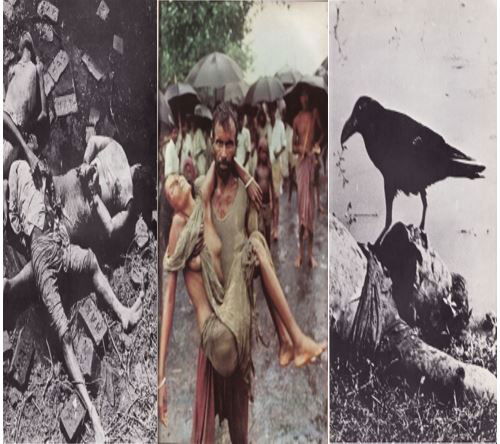

Bangladesh Golden Jubilee Independence is not, only a historic occasion for joys, but also a great human tragedy to memorize.
It is always said that “History cannot be rewritten AND the truth always exists, and ultimately it comes out whether Homo Sapiens wishes or not”.
History not only tells Life of Nation and Humanity. But sometimes its “Mattress Extrusion”, can also lead to the most heinous human act called “Human Race Genocide”.
Unfolding pages of the second half of the last century, mankind has witnessed many genocides around the globe. Some of the worst genocide are:
Bangladesh Hindus genocide (1971), has been dubbed “Forgotten Genocide” though it’s less well-known than other genocides, despite the fact that the number of Hindus killed exceeds far more than other genocides.
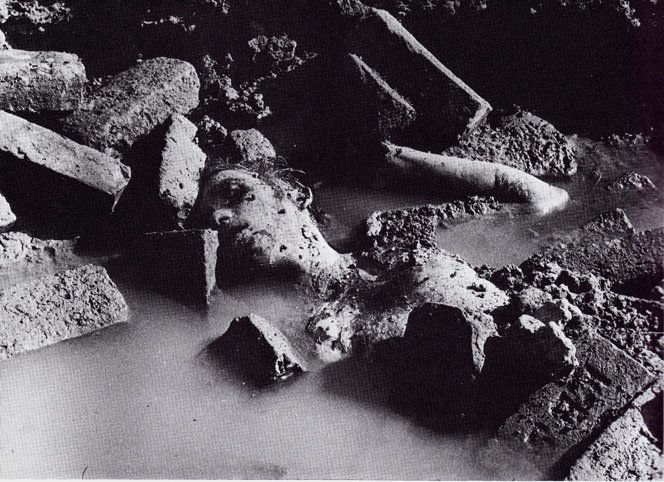
Let’s drill the history of the events which leads to barbaric killing, rapes, kidnapping of innocent Hindu’s men and women during “Bangladesh Hindus Genocide of 1971”
The Tebhaga movement was a major agrarian struggle in the state of Bengal (pre-1947 Partition) that saw women of all creeds—Hindu, Muslim, tribal—from the lower socio-economic classes unite and mobilize against more wealthy landowners in a revolt against the unfair ownership and distribution of crops. Peter Custers reveals: “At its height, the uprising was led by rural poor women who took the front-rank role in defending the movement’s gains and in countering the repression of the state”[1]
These women, who were among the poorest of landless people, unexpectedly created a semi-militia troop called “Nari Bahini”, which became a force of women’s resistance throughout Bengal’s insurgent villages and was in large part a reaction to the whole manner of ills and injustices suffered at the hands of landowners and state authorities.
Bengali men were, of course, also involved in the Tebhaga movement, but they were often away from their villages and engaging in the conflict by fighting in the nearby hills and fields.
Given the spontaneity of this female force, it is not surprising that they were largely untrained in the tactics of guerrilla warfare and were armed only with household instruments, such as kitchen utensils and broomsticks. In spite of this, as Custers writes, “They (Nahi Bahini) excelled in shielding villages against the brutal police raids. They are frequently arrested but repelled. The humiliated police patrols carrying fire-arms, largely relying on courage and ingenuity”
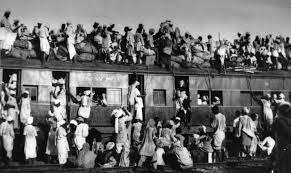
British followed their “Divide and Rule” strategy and in 1947, the Partition of Bharat (British India) saw the creation of two nation-states, India and Pakistan on basis of religion. Pakistan was split into two, distant wings (East Pakistan and West Pakistan) separated geographically by India from 1947 until 1971. West Pakistan, often referred to simply as Pakistan, was the national center of the country, and East Pakistan fought a war for secession from it in 1971, which led to the creation of Bangladesh (known as the Bangladesh Liberation War).
The years 1967 to 1971 in West Bengal (India) and East Pakistan (now Bangladesh) are prominent for their anti-establishment activity when taking into account two major historical movements:
a) Naxalite movement: – It originated in India, and
b) Bangladesh Liberation War: – Initiated in East Pakistan (now Bangladesh) for its liberation from West Pakistan (now Pakistan).
These two distinct, though overlapping, events are frequently associated with male in the uprising against landowners and government officials in West Bengal during the Naxalite movement and in the Liberation War against the oppressive rule of West Pakistan in East Pakistan, which culminated in the “Birth of Bangladesh”.
Although the majority of both West and East Pakistan were Muslim, other ethnic, linguistic, and cultural characteristics overshadowed their shared religious identities.
East Pakistanis, independence was perceived by the secular elite as a victory of secularism over Pakistan’s religious nationalism.
Firstly, East Pakistanis were suspicious of the religious parties who often politically campaigned on ethnic differences as opposed to religious principles. Moreover, the secular philosophies emanating from West Bengal, India would have a greater intellectual impact on fellow Bengalis than the religious ideological parties from the Punjab and Sindh provinces of West Pakistan.
Secondly, East-Pakistani’s resented Jinnah’s declaration that Urdu would be the official state language of East and West Pakistan as most East-Pakistanis only spoke Bengali. This linguistic policy not only alienated half of the population but also denied participation in Pakistani public or political life.
At this time, religion and culture separated the East and West sections: West Pakistan was populated by mostly Muslim Punjabis, while East Pakistan was more diverse with a considerable population of Hindu Bengalis. West Pakistan looked down upon their eastern neighbors, calling the area “a low-lying land of low-lying people” who “polluted” the area with non-Muslim values. This is a clear demonstration of dehumanization.
Stanton says “overcomes the normal human revulsion against murder” by equating the victimized groups to vermin and filth. Lacking empathy for their disregarded neighbors, the people of West Pakistan abused their eastward neighbors economically and through lack of aid. West Pakistani elites, living and working in the political center of the country, siphoned most of the country’s revenue, initially generated by East Pakistan[2].
Thus, it is not surprising that it was the status of Bengali language, Economic injustice, and hatred towards eastern neighbor that produced and mobilized East Pakistani political leaders, nationalists, intellectuals, and university students to petition for greater representation and autonomy.
However, the relationship between two exclaves further deteriorated when West Pakistan failed to deal with a deadly cyclone that displaced millions and killed an estimated half a million East Pakistanis in 1970. Many East Pakistanis blamed the racialized state administration. Authorities in West Pakistan correspondingly accused the Awami League, the main East Pakistani political party, and its leader Sheikh Mujib of exploiting the human tragedy for political gain. Consequently, every critique of West Pakistan emerging out of Dhaka was caricatured as Indian propaganda.
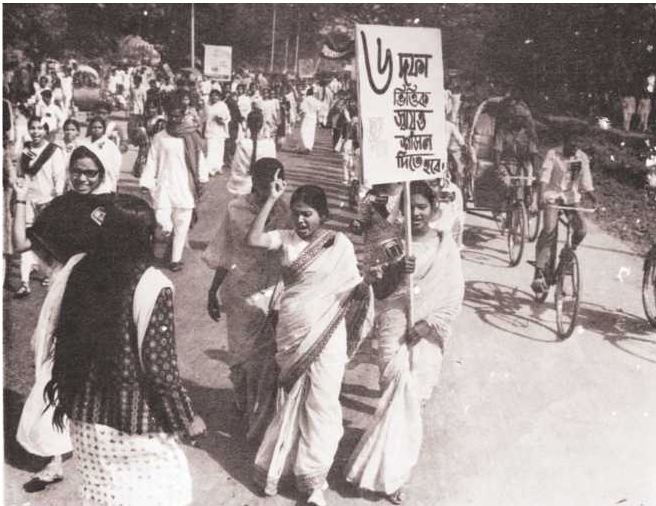
The students in the erstwhile East Bengal played a vital role. Whether it was in opposing Muhammad Ali Jinnah’s unilateral declaration in March 1948 that “Urdu and Urdu alone shall be the state language of Pakistan “, or subsequently in demonstrating for making Bengali as one of the National Languages of Pakistan or eventually getting shot by the police on 21 February 1952, the students were found everywhere in their struggles and sacrifices for the nation. Students in East Pakistan (Bangladesh) were forward-looking, a progressive bunch of young men and women who supported Bengali Nationalism not because they were narrow nationalistic but Bengali Nationalism to them meant freedom from the shackles of an artificially imposed sense of nationalism based on religious divisions
The students, therefore, in the eyes of the Pakistani junta were seen opposed to the very notion of a communal Pakistan. The Bengali students were seen first as a potential threat to Pakistan and then as an actual threat when the Language Movement in Bangladesh gradually evolved into a broader socio-political and economic movement for the emancipation of the Bengalis who comprised the majority in Pakistan and contributed the lion’s share into the exchequer of the country[3].
A month after Cyclone Bhola, Pakistan held elections the first time after its creation, which fiercely pitted Sheikh Mujib’s, Awami League against Zulfikar Ali Bhutto’s, Pakistan People’s Party. The results revealed that the Awami League won 162 and Bhutto Party won 138 out of the 300 available seats in the National Assembly, thus causing a landslide victory for East Pakistan. Although the majority win should have conceded the formation of a new government to the Awami League, President Yahya Khan and Bhutto’s Pakistan People’s Party refused the leadership of an East Pakistani political party over West Pakistan
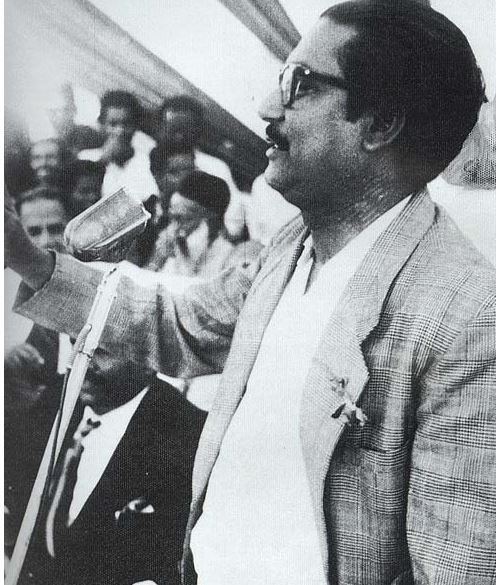
In return, Bhutto and the West Pakistani elites perceived Sheikh Mujib’s demands as a form of secession as they rejected the Six Point plan while continuing to delay the convening of the National Assembly. On March 7, 1971, Sheikh Mujib already known as Bangabandhu (the friend of Bengal) gave a speech in the Ramna Racecourse that demanded from West Pakistan the lifting of martial law, withdrawal of the military, and a transfer of power to the democratically elected Awami League. Additionally, Sheikh Mujib called for all the people of Bangla, Hindus, and Muslims, Bengalis, and non-Bengalis to participate in displays of civil disobedience and protest against the one-sided decisions made by Islamabad.
East Pakistan television broadcasters started broadcasting Rabindranath songs, a taboo in Pakistan while reducing the air-time of shows from West Pakistan. Civilian interaction with the Pakistan Army was decreased and they were increasingly seen as an occupying force, while local contractors stopped providing supplies to the Pakistan Army. The Pakistan Army also tried to disarm and dismiss personnel of Bengali origin in the East Pakistan Rifles, the police, and the regular army. The Bengali officers mutinied against the Pakistan Army and attacked officers from West Pakistan. The Pakistan Army’s crackdown on the civilian population had contributed to the revolt of East Pakistani soldiers.
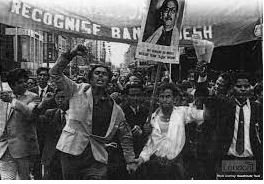
The East Pakistani soldiers moved to India and formed the main body of Mukti Bahini Sheikh Mujib on 26 March 1971 declared the independence of Bangladesh, while Pakistan’s President Yahya Khan declared Mujib a traitor during a national broadcast on the same day. The Pakistan Army moved infantry and armored units to East Pakistan in preparation for the coming conflicts.
Operation Searchlight is seen by many as the first step in the Bengali genocide. As Per the Bangladesh Genocide Archives, the operation, initiated on March 25, 1971, resulted in the death of between 5,000 and 100,000 Bengalis in a single night. Forces of the Pakistani Army targeted academics and Hindus, specifically murdering many Hindu University Students and Professors.
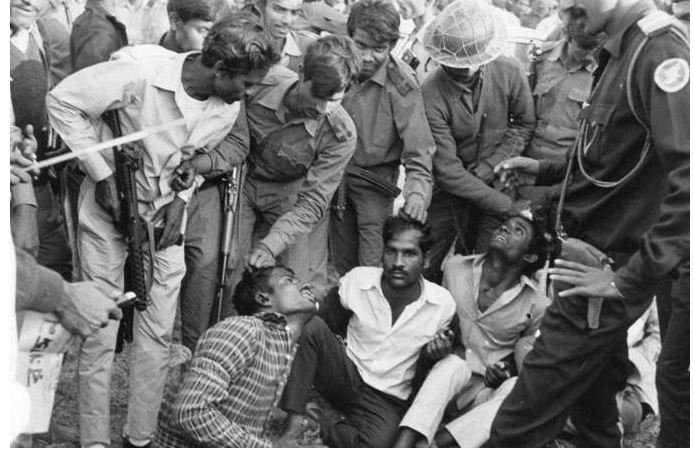
The first simultaneous attacks came on what was then known as Jagannath Hall of Dhaka University. It may be mentioned here that Jagannath Hall is exclusively meant for non-Muslim students, particularly Hindus most young men, and to some extent young women too, were the targets of attack by the Pakistani Army and their auxiliary forces. The first attack on the students was also very much target-oriented.
The massacre on the 25th March actually began from “Dhaka University” which Pakistan seems as “Most Potential Threat”. After dormitories have been shelled at a point-blank range, any students remaining alive were shot or bayoneted to death. Major General Fazal Muqeem Khan, the official historian of the Pakistan Army wrote: The army had to use rocket launchers to break open some rooms of the hall.
Pakistani soldier in the foreground was using a US-made light machine gun. The army cordoned Peelkhana, the headquarters of the East Pakistan Rifles / Bangladesh (EPR), Rajarbagh police barracks, and the Ansar headquarters at Khilgaon. Shooting continues for hours and what was left was behind were dead bodies of East Bangladeshi personnel who were once either part of the Pakistani Army or its Police force. Such barbaric acts send a shock wave in East Pakistan (Bangladesh).
The correspondent from the British newspaper Daily Telegraph, Simon Dring reported on March 30, “ Led by the American supplied M-24 World War II tanks, one column of troops sped to Dacca University shortly after midnight. Troops took over the British Council Library (situated within the campus) and used it as a firebase from which to shell nearby dormitories areas. Caught completely by surprise some 200 students were killed[3].
In addition to Jagannath Hall and the erstwhile, students of all ages, irrespective of their religion or gender identity were killed, tortured, or at the least humiliated. Students were considered as the “Harbinger of the Independence Movement of 1971” and hence they were the “Principal Target of Murder and Atrocities in 1971”.
Neither gender nor age was a factor in deterring the perpetrators of war crimes from committing atrocities and murder. Female students were not spared either. In this context, it is very important to note that female students too were subject to equal subjugation and torture by the Pakistani Army.
On March 30, 1971, the American Consul General in Dhaka, “Archer Blood”, sent a telegram to the State Department recounting the Pakistani atrocities in Dhaka. In it, he wrote about the massacre at Rokeya Hall at Dhaka University where, according to Blood, the building was “set ablaze and girls machine-gunned as they fled the building.”
On March 31, 1971, Archer Blood sent another telegram that recounted atrocities against girls. Blood wrote: "Six naked female bodies at Rokeya Hall, Dacca U. Feet tied together. Bits of rope hanging from ceiling fans. Apparently raped, shot, and hung by their heels from fans." Small notes they may be, but they bear a very big footmark of the atrocities of the Pakistani Army and their collaborators in crime.
The goal of the operation was to crush the Bengali nationalist movement through fear; however, the opposite occurred. Enraged at the actions of the Pakistan Army, Bangladesh declared its independence the following day.
Over the next several months, the Pakistani Army conducted mass killings of young, able-bodied Hindu men.
According to R.J. Rummel, “the Pakistan army [sought] out those especially likely to join the resistance — young boys. Sweeps were conducted of young men who were never seen again. Bodies of youths would be found in fields, floating down rivers, or near army camps”3.
From the report of Simon Dring, published in the Daily Telegraph of London on March 31, 1971, it was revealed that more than 200 students and teachers of Dhaka University were killed. In old Dhaka, 700 people, mostly Hindus, fell prey to ruthless firing or were burnt to death. Sydney Morning Herald put the figure at 100,000.
Pakistani Army strategized the Bengali Hindu Genocide into three phases over the course of 1971:
“Kill three million of them and the rest will eat out of our hands,” Pakistan’s military President Gen. Yahya Khan is said to have ordered before the start of the brutal ‘Operation Searchlight’ on the night of March 25, 1971[4].
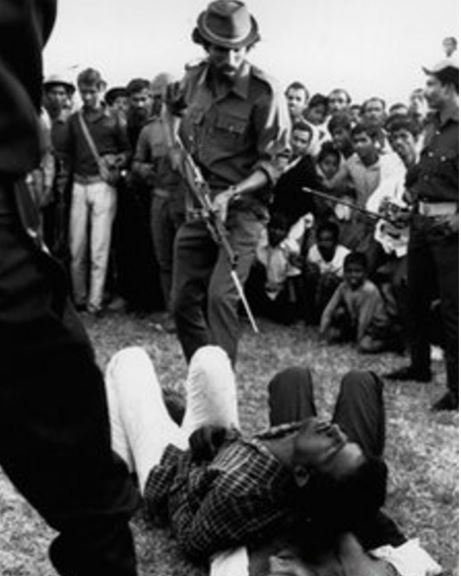
Muslims torched Hindu houses or entire neighborhoods and/or looted them, especially if Hindus had refused to convert to Islam. Sometimes crowds ransacked all stores run by Hindus. Crowds also attacked steamboats, trains, and busses in order to slaughter Hindus. Many Hindu girls and women were raped or abducted. As a result, the refugee wave to India rose during the Hindus Holocaust.
According to the confession of a Pakistani soldier who was one of the 93,000 prisoners of war but returned home safe after the country’s historic surrender in Dhaka: “We were told to kill the Hindus and Kafirs[4].
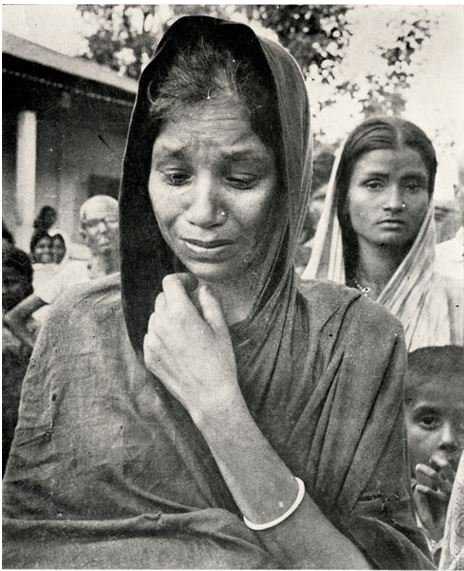
Most of the rape victims of the Pakistani Army and its allies were Hindu women. Imams and Muslim religious leaders declared the women “War Booty” and supported the rapes. The activists and leaders of Islamic parties are also accused to be involved in the rapes and abduction of women.
Women were attacked in two ways:
Firstly, Hindu women were raped and killed;
Secondly, Bengali Muslim women who were perceived to be under Hindu influence were impregnated by force in order to create “pure” Muslims[5].
Bina D’Costa spoke with many respondents who especially mentioned the brutality of Pakistan’s army in its “handling” of Hindus. The members from the Hindu community with whom she interacted firmly believed in the persecution of Hindus by the Pakistan army and Razakaar during the war. Hindu women who were kidnapped by the Pakistan army were never seen again; mostly they were killed after being raped.
Bina D’Costa interacted with families of two Hindu women who were taken by “Punjabi” army men, neither of them returned to their respective homes after the war.
Aubrey Menen who was a war correspondent wrote about a 17-year-old Hindu bride who was gang-raped by six Pakistani soldiers according to her father.
Two went into the room that had been built for the bridal couple. The others stayed behind with the family, one of them covering them with his gun. They heard a barked order and the bridegroom's voice protesting. Then there was silence until the bride screamed...In a few minutes, one of the soldiers came out, his uniform in disarray. He grinned at his companions. Another soldier took his place in the extra room. And so on, until all six had raped the belle of the village. Then all six lefts, hurriedly. The father found his daughter lying on the string unconscious and bleeding. Her husband was crouched on the floor, kneeling over his vomit[5].
Independent accounts also indicate that Hindus from East Pakistan were a special target during 1971 of East Pakistan’s Genocide. HINDU HOUSES WERE PAINTED WITH YELLOW “H”s, THEY WERE ROBBED OF THEIR LANDS AND SHOPS, AND THEY WERE SYSTEMATICALLY SLAUGHTERED

Acclaimed researcher Susan Brownmiller, who conducted a study on the crimes, wrote in her book, ‘Against Our Will: Men Women and Rape, “200,000, 300,000, or possibly 400,000 women were raped. The Pakistanis, in their failed attempt of Islamization in Bangladesh, adopted this particular cruel and anti-human approach of cleansing the followers of a particular faith (Hindu).”
Anthony Mascarenhas, a courageous Pakistani journalist, who fled to London after witnessing the atrocities on the ground, gave a graphic picture of the crimes committed by Pakistan’s military against Hindus in London’s Sunday Times on June 13, 1971.
Just before the military began their planned genocide in Dhaka on the night of March 25, 1971, they compelled all foreign journalists to leave the country. From the reports of three foreign journalists, Arnold Jetelin, Michael Laurent, and Simon Dring, who was hiding at risk, some details came out about the ruthless brutality.
Archer Blood, the American consul-general in Dhaka, and Kenneth Keating, the U.S. ambassador to India, both called on President Nixon to discontinue their support of the Pakistani regime. Both diplomats were ignored and Blood was recalled.
The world at large was well aware of the violence happening in Bangladesh throughout Operation Searchlight. Indian Prime Minister Indira Gandhi termed the attack “GENOCIDE” as early as March 31 of that year.
“Our government has failed to denounce the suppression of democracy. Our government has failed to denounce atrocities… Our government has evidenced what many will consider moral bankruptcy.” – Archer Blood, American diplomat, April 6, 1971[6].
U. Thant, then Secretary-General of the UN, wrote to the President of the Security Council on June 3, 1971, demonstrating the helplessness of the world body to stop the crimes on the unarmed civilians in former East Pakistan: “The happenings in East Pakistan constitute one of the most tragic episodes in human history. Of course, it is for future historians to gather facts and make their own evaluations, but it has been a very terrible blot on a page of human history.[7]”
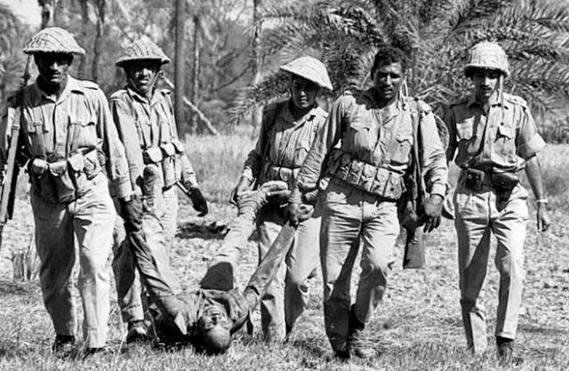
By halfway (August of 1971) through the nine-month genocide, the U.S Central Intelligence Agency had given a conservative estimate of 200,000 Bangladeshis murdered. There was violence on all sides, with some fighting between Bengali factions (whose goals for independence or unity with West Pakistan differed), but it seems clear that Pakistani soldiers perpetrated most of the brutal attacks, many wielding weapons supplied by the U.S. since Pakistan was considered an American ally.
US President Nixon and his national security advisor, Henry Kissinger, considered Pakistan a close ally in the region. The U.S. provided weapons and used Pakistan as a gateway to open diplomatic relations with China. These same weapons were used by Pakistan Army to slaughter Hindus in Bangladesh.
Nixon and Kissinger were both terrified about the possibility of India intensifying their relationship with the U.S.S.R. after the two countries signed the “Treaty of Peace, Friendship and Cooperation” that seemed to indicate India would be relinquishing its role as a neutral bystander and not overly concerned about Pakistan’s military action in Bangladesh—or the reaction of Americans who read about it.
“Biafra, another genocidal war (at the almost same time) in Nigeria stirred up a few Catholics,” Nixon was recorded saying. “But you know, I think Biafra stirred people up more than Pakistan, because Pakistan, they’re just a bunch of brown goddamn Muslims.[9]”
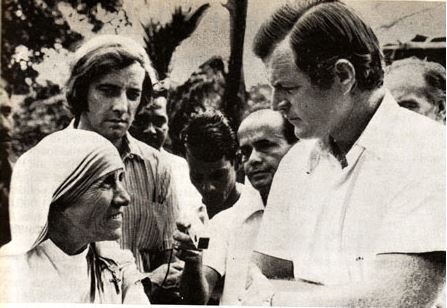
Senator Edward Kennedy in his report gives the following details about the refugees from Bangladesh in 1971. As of October 25, 1971, 9.54 million refugees from East Pakistan had crossed over to India. The average influx as of October 1971 was 10,645 refugees a day. Hence the total refugee population at the start of the Bangladesh war on December 3, 1971, was about 10 million.
Sen. Kennedy further mentions that the Government of India had set up separate refugee camps for Hindus and Muslims where possible, i.e., refugee camps of Hindus were located in Hindu majority areas and similarly, Muslim camps were located in Muslim majority areas. THE COMMUNAL REPRESENTATION OF REFUGEES WAS 80 PERCENT HINDU, 15 PERCENT MUSLIM AND 5 PERCENT CHRISTIAN AND OTHER. This means that 8 MILLION OF THE 10 MILLION REFUGEES WERE HINDUS[8].
As a political scientist, Gary J. Bass writes, “Above all, Bangladesh’s experience shows the primacy of international security over justice.”
In addition to highlighting how one country has struggled to come to terms with its past, the Heritage Foundation’s Lisa Curtis says the Bangladesh genocide should be further studied to help understand “How the U.S. deals with massive atrocities happening abroad”.
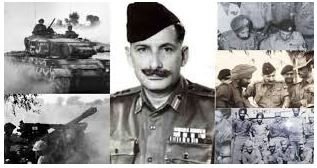
In the State of West Bengal, Mukti Bahini or Bangladesh Liberation Army was created. The term “Mukti Bahini” (Bengali: মুক্তিবাহিনী), called as “freedom fighters”, or “Bangladesh Liberation Army”, or the “Bangladesh Forces”, was the guerrilla resistance movement consisting of the Bangladeshi military, paramilitary, and civilians during the War of Liberation. A formal military leadership of the resistance was created in April 1971 under the Provisional Government of Bangladesh. The military council was headed by General M. A. G. Osman and eleven sector commanders The Bangladesh Armed Forces were established on 4 April 1971. The Mukti Bahini received training and weapons from India, where people in the state of West Bengal shared a common Bengali ethnic and linguistic heritage with East Pakistan.
The Daily Star, the largest English daily newspaper in Bangladesh, disclose that many women had joined the movement disguised as men in order to fight alongside the male soldiers and did so without bathing for weeks lest their gender is discovered. Additionally, the women’s testimonies reveal that the freedom fighting movement formed specific female guerrilla units and a training camp for women where they were taught to fight and how to use arms.
One of the women, Shirin, explains how she was part of the “first batch” of 234 women in a training camp in India. Another of the women, Farquan, recounts: “I always carried a Chinese pistol. When I was with the others, fighting on the streets, I carried grenades.” Although women’s roles and responsibilities in more supportive roles behind the scenes were crucial to the cause, these testimonies reveal the significance of women’s contributions to the liberation movement on the front lines. Their testimonies also challenge traditional patriarchal assumptions about women as more naturally peaceful. Another female fighter, Alamtaj Chhobi, reveals: “During the war, I killed members of the Pakistani Army and rajakars (collaborators). I used my guns and I used my bayonet. I gained a lot of strength of mind during that time.1”
Political scientist Prof. Rounaq Jahan wrote in her book, ‘Genocide in Bangladesh’: “All through the Liberation War, able-bodied young men were suspected of being actual or potential freedom fighters. Thousands were arrested, tortured, and killed. Eventually, cities and towns became bereft of young Hindu males who either took refuge in India or joined the liberation war.”
The India-Pakistan war was started in the first week of December 1971 on both eastern and western borders. War was fought with all its commands – Army, Navy, and Airforce.
On the western border, Pakistan didn’t stand the powerful Indian Army and lost hundreds of thousands of kilometers of land in the states of Punjab, Rajasthan, and Sindh to the Indian Army within the first few days of the war.
Similarly, on the easter border, the conditions were also not too favorable for the Pakistani Army. In the first week of December 1971, when the “Mukti Bahini” and their Indian “Mitra Bahini” were jointly advancing to Dhaka, the Pakistani occupation forces were quickly abandoning their camps, sensing imminent defeat. On the eve of their unconditional surrender to the Bangladesh-India Joint Command, on December 16, the local cohorts of the occupation army eliminated hundreds of leading intellectuals, ostensibly to destroy the intellectual underpinning of the Bengali nation. In short, Pakistan forces didn’t stand the formidable form of the Indian Army and were bought to its knees within 2 weeks.
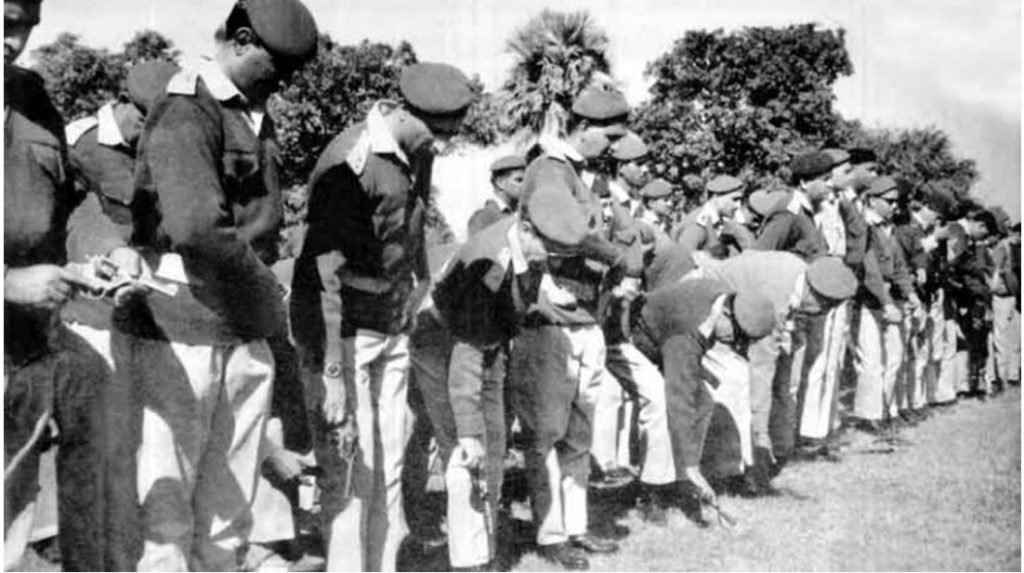
Within a span of just 12 days, 93000 Pakistani Soldiers surrendered to Indian forces, ending the Hindu Genocide on December 16, 1971. Though Bangladesh established its initial independence directly following Operation Searchlight, the people of Bangladesh established themselves and their nation as a peaceful country and began the reconciliation process.
East Pakistan attained freedom on December 16th, 1971, and become a new country called “Bangladesh”. But the plight of women didn’t stop even after independence.
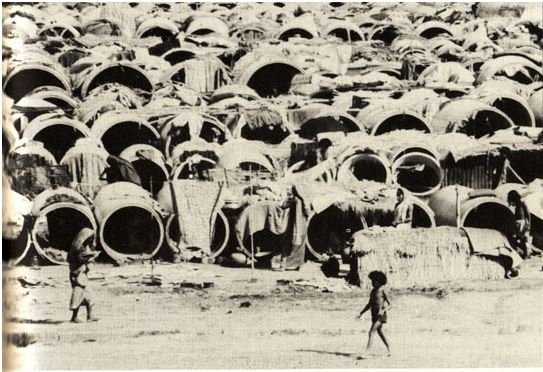
The raped women numbered around half a million, were bestowed the name of Birangana or “War-Heroine” by the newly established nation of Bangladesh in an effort to eulogize their rape as their sacrifice for the new nation. Despite the effort to reconcile and romanticize their disturbing experiences in the post-war years, however, the continued physical presence of the raped women, as well as of the West Pakistani-fathered children that many bores, within the new nation served as a reminder of the atrocities of the war.
In addition, "the shame and loss of honor associated with sexual violence and rape in traditional households meant that the Birangana was, in many cases, ostracized from society, regarded as unfit for marriage, and unwelcome in her family home; ultimately the whole matter was “shrouded in zones of silence”
The fact that is glossed over in these statistics is that “THE ENTIRE HINDU POPULATION OF EAST PAKISTAN WAS THE PRIMARY TARGET OF PAKISTANI ARMY DURING THE 9 MONTHS OF REPRESSION IN 1971″.
Using the population statistics from Bangladesh Government and US Government publications this article PROVES that 80 percent of the refugees from Bangladesh were Hindus and that 80 percent of the 3 million killed were Hindus.
THUS, IT WAS A HINDU REFUGEE PROBLEM and IT WAS A HINDU GENOCIDE THAT TOOK PLACE IN EAST PAKISTAN IN 1971.
Several agencies indicate that the brutal Pakistani army repression killed 3 million Bengalis. This estimate is even given by the Government of Bangladesh. However, the debate is that no religious mix of the dead is easily available.
Let us, therefore, look at the population demographics for Bangladesh which is given in Table I.

Since Hindus and Muslims in Bangladesh have similar socio-economic and educational backgrounds, the birth and death rates for these two groups must be very similar. This means that the Hindu population must grow at the same pace as the total population growth rate. Hence any unusual drop must be accounted for by the influx of Hindu refugees and mortality rate from non-natural causes. The expected Hindu population, the emigration to India from E. Pakistan, and actual populations are listed in Table II.

Thus if the 1947 partition had not resulted, the Hindu population of the East Pakistan area should 1961 have increased proportionally from 11.76 million in 1941 to 14.24 million (11.76 * 50.84 / 42 = 14.24). The official Indian Government records indicate that between 1947 and 1958, 4.12 million (Hindu) refugees crossed into India from East Bengal. This means the Hindu population in East Pakistan in 1961 should have been 10.12 million (14.24 – 4.12) compared to the actual 9.41 million. The missing 0.7 million Hindu population can be accounted for several hundred thousand killed in the riots in 1947 on the Bengal border, plus the refugee influx from 1958 to 1968.
Let us now look at the Hindu population in East Pakistan from 1961 to 1974. With the proportional increase, the Hindu population of 9.41 million in 1961 should have increased to 13.23 million (9.41 * 71.48 / 50.84 = 13.23) by 1974. However, the actual Hindu population as per Bangladesh Census data for 1974 was 9.65 million. Of the 3.58 million shortfalls only 1.11 million can be accounted for since the Government of India’s record indicates that 1.11 million (Hindu) refugees crossed into India between 1964 and 1970 i.e. PRIOR to the 1971 crisis.
THUS 2.47 MILLION (13.23 - 9.65 - 1.11 = 2.47) HINDUS FROM EAST PAKISTAN ARE UNACCOUNTED FOR FROM THE 1971 PAK ARMY REPRESSION.
OTHER PROOF FOR 2.4 MILLION HINDUS KILLED IN EAST PAKISTAN
Since 80 percent of the refugees in 1971 were Hindus, a similar proportion of the dead are likely to be Hindus also. The official Bangladesh government estimate puts the number of Bengalis killed at 3 million. 80 percent of 3 million put THE NUMBER OF HINDUS KILLED AT 2.4 MILLION which is close to the number of Hindus missing calculated comes above.
The Hindu Genocide of 1971 in Bangladesh is exactly a blueprint of ethnic cleansing. It showcases how the killing of intellectuals, raping women, and the birth of millions of unwanted children born out of atrocities was done just to change the ethnicity of the country.
The families of the victims, the civil society, and the 1971 veterans have continued to raise their voices demanding unconditional apology from Pakistan for the barbarity of their forces on Bangladesh soil.
It is also justified that the “Government of Pakistan take steps to hold the trial of the accused 195 military personnel whom the post-independent Bangladesh government identified as war criminals“.
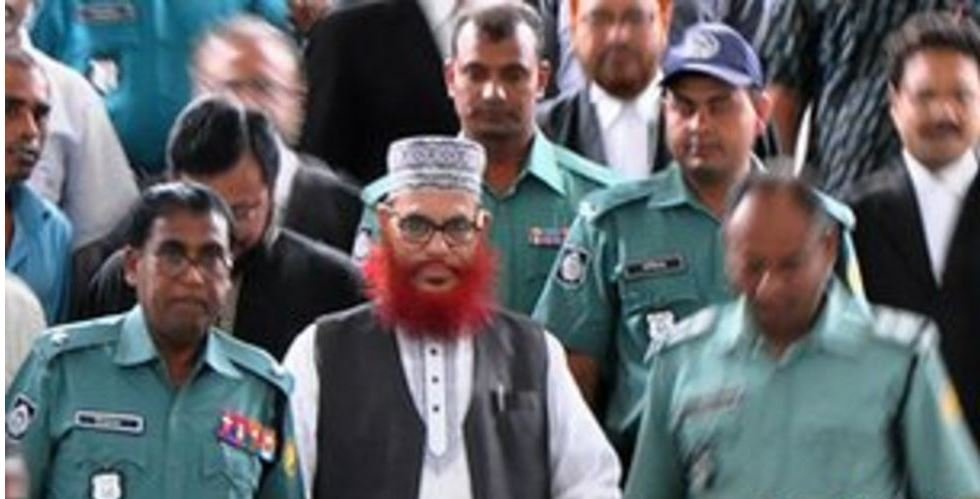
During the speech at the 72nd session of the UNGA, Sheikh Hasina the Prime Minister of Bangladesh called for the ‘recognition of past tragedies like the 1971 genocide’ Bangladesh Prime Minister Sheikh Hasina has hit out at Pakistan, saying its Army launched a “Heinous” military operation in 1971 which triggered a “GENOCIDE” during the liberation war, killing three million innocent people.
In her address to the UN General Assembly on Thursday, Hasina said her country’s parliament had recently declared March 25 as Genocide Day to pay homage to the victims
The genocide included targeted elimination of individuals on the grounds of religion, race, and political belief. The intellectuals were killed brutally.[9]” Hasina said.
In United State, the country which was a mere spectator during Hindu Genocide has established the Center for Bangladesh Genocide Research (CBGR). This American institution does the documentation, study, and interpretation of the history of the 1971 genocide, and serves as Bangladesh’s memorial to the millions of people murdered during 1971.
The trial for this genocide was always in demand and after around 40 years some hope was seen when some prominent news channels start interviewing the Hindu women who had faced barbarism in hands of the Pakistani Army.
Here are some of Heart Rendering Testimonies: –

1) Miss Priyabhashini was 23 at that time when a group of Pakistani soldiers and their Bangladeshi associates stormed into her house and dragged her away. Her husband and three children watched helplessly as she was bundled into an army jeep.
For seven months, she was repeatedly raped and tortured at an army camp in the capital Dhaka, she mentioned with tears in her eyes.
"I was subjected to extreme physical and mental torture. They had no mercy. Many of my friends and relatives were killed in front of me,"."It is heartening to see, 40 years after those atrocities, that some of those responsible for those gruesome acts are in the dock," Miss Priyabhashini said
The minority Hindu community was particularly targeted. Many Hindus were even forcibly converted to Islam[10].
2) Shabnam also managed to trace another “Birangana” mother and her daughter. This brave daughter gave testimony in the War Crimes Tribunal. All three children have borne the brunt of the Bangladesh Liberation War though they were not even born then. Sudhir could never go to school because the family lived as social outcasts in a remote area. He is married and lives with his mother and wife. He manages to eke out a bare existence by driving a van rickshaw while his wife manages the home. “I consider myself a Hindu because my mother is Hindu and I have no clue who my father is or was.” He had a love marriage and that is why he has a family life. His mother, the so-called “Birangana” looks expressionlessly at the world outside not exactly what she is looking out or looking for[11].
3) Tara Banerjee, a Hindu girl from Bangladesh. She had met her in the operation theatre in the rehabilitation center. Tara was kidnapped and raped by her fellow countrymen and then handed over to the Pakistani military for prolonged torture. The cannibalistic nature towards Tara continued in the military camp till December 16, the day of Bangladesh’s victory from Pakistani rule. During the 1971 war in Bangladesh, Bangladeshi Hindu women were not only victimized by the Pakistani perpetrators but also kidnapped and raped by the pro-Pakistani Bengali people and the Bengali nationalists.
In the words of Tara: The first man to brutalize me physically in that hospital was a Bengali. I was too weak to fight back and too shocked to absorb the truth that a Bengali man had violated my honor instead of trying to save me. My head was not strong yet, and my body lay powerless, as I was being dishonored by a bestial Bengali man. After her abduction, Tara escaped from her own nation and migrated to Holland. There she became a nurse and married a doctor to live a dignified life.
4) Chapa, another Hindu girl also met the same fate, but she was not fortunate enough to escape from the country. Her father was a rebellious figure of 1952 in East Pakistan and her elder brother had also joined the freedom struggle. After losing her family in the war, she was raped by hundreds of Pakistani perpetrators. Her suffering continued even after independence when neither her family’s sacrifice nor her suffering was recognized by the nation. Her only identity was that she was a Hindu girl raped by Muslims and hence ostracized by society.
The portrayal of victims’ plight in the literature by Neelima Ibrahim, Nayanika Mukherjee, and many others indicates that nine months’ physical abuse and psychological torture in the lives of raped victims was followed by their struggle for identity in a free state. Hence, they were left with the options of migration, suicide, or ongoing psychological and physical torture[12].
Why the world remains a silent sitting duck to date to one of the biggest Hindu Genocide of History.
Hindus demands the answers to the below questions: –
1. Independent accounts indicate that Hindus from East Pakistan were a special target during the 1971 army repression. HINDU HOUSES WERE PAINTED WITH YELLOW “H”s, THEY WERE ROBBED OF THEIR LANDS AND SHOPS, AND THEY WERE SYSTEMATICALLY SLAUGHTERED.
Why the world didn’t make Pakistan accountable and ask “Terror State” to pay the price by enlisting in FATF Black List?
2. 80 percent of the refugees to India in 1971 were Hindus, THUS IT WAS A HINDU REFUGEE PROBLEM.
Why should India take other religious refugees?
3. NEARLY 2.5 MILLION HINDUS WERE KILLED DURING THE 9 MONTHS OF THE PAKISTANI ARMY PLANNED REPRESSION OF EAST PAKISTAN IN 1971. THUS, IT WAS A HINDU SLAUGHTER / GENOCIDE IN 1971.
Why United Nations was silent although U. Thant, then Secretary-General of the UN has raised concern?
4. AROUND HALF A MILLION HINDU WOMEN WERE RAPED AND KEPT AS SEX SLAVES IN PAKISTAN ARMY CAMPS
Where are the women Organizations and they have been silent to date?
5. ALL THE ABOVE BEAR AN UNCANNY RESEMBLANCE TO THE PERSECUTION & HOLOCAUST OF JEWS BY THE NAZIS.
Why so-called big powers of that time like the USA, Russia, UK had so much concern for one and are silent on the other?
6. INDIAN GOVERNMENT CONTROLLED ‘SECULAR’ MEDIA DELIBERATELY HID THE SINISTER TRUTH OF HINDU GENOCIDE IN EAST PAKISTAN.
Why Indian Congress Government of Indira Gandhi remained silent at that time. Do Indian People demand an answer?
7. In any internal political problem of an Islamic country, Hindus (or minorities of other religions) become the scapegoats and will be liquidated at the first chance the Islamic Government gets.
How did Islamic Countries let these genocides to happened? Why world remain a spectator to these?
8. WE HAVE LEARNT NOTHING FROM HISTORY AND WITH THE ‘SECULAR MEDIA WE WILL LEARN NOTHING.
How Secular Media has become white mites to Indian Democracy? Hasn’t the time come when we need to boycotts such media.
9. During the past 50 years, Pakistan has continued to deny the allegations of genocide and mass rape by its army in Bangladesh. But its position doesn’t have many takers.
Why World Organizations like the UN, World Bank has not taken any action against the Genocide State of Pakistan?
To end this article on sorrow note, I would say that the “Bangladesh Hindu Genocide of 1971” reminded me of what French journalist Paul Dreyfus once had said of East Pakistan (Bangladesh) situation, “Over the years, West Pakistan behaved like a poorly raised, egotistical guest, devouring the best dishes and leaving nothing but scraps and leftovers for East Pakistan.”
[1] Harrington.pdf (soas.ac.uk)
[2] Bangladesh: The Forgotten Genocide – UAB Institute for Human Rights Blog
[3] Microsoft Word – Anis Ahmed.doc (kean.edu)
[5] https://www.owlapps.net/owlapps_apps/articles?id=34655805&lang=en
[6] The Genocide the U.S. Can’t Remember, But Bangladesh Can’t Forget | History | Smithsonian Magazine
[7] Bangladesh: Recalling brutality, killings and mass rapes (indiavsdisinformation.com)
[8] Genocide of Hindus in banglasdesh.pdf (iitk.ac.in)
[9] Pakistan military started ‘genocide’ of 1971, says Sheikh Hasina : The Tribune India
[10] Bangladesh finally confronts war crimes 40 years on – BBC News
[11] Rape As Genocide: ‘Born Together’ On Children Born of Rape in 1971 War (thecitizen.in)
[12] History and/through Oral Narratives: Relocating Women of the 1971 War of Bangladesh in Neelima Ibrahimâ•Žs A War Heroine, I Speak (bridgew.edu)
DISCLAIMER: The author is solely responsible for the views expressed in this article. The author carries the responsibility for citing and/or licensing of images utilized within the text.
